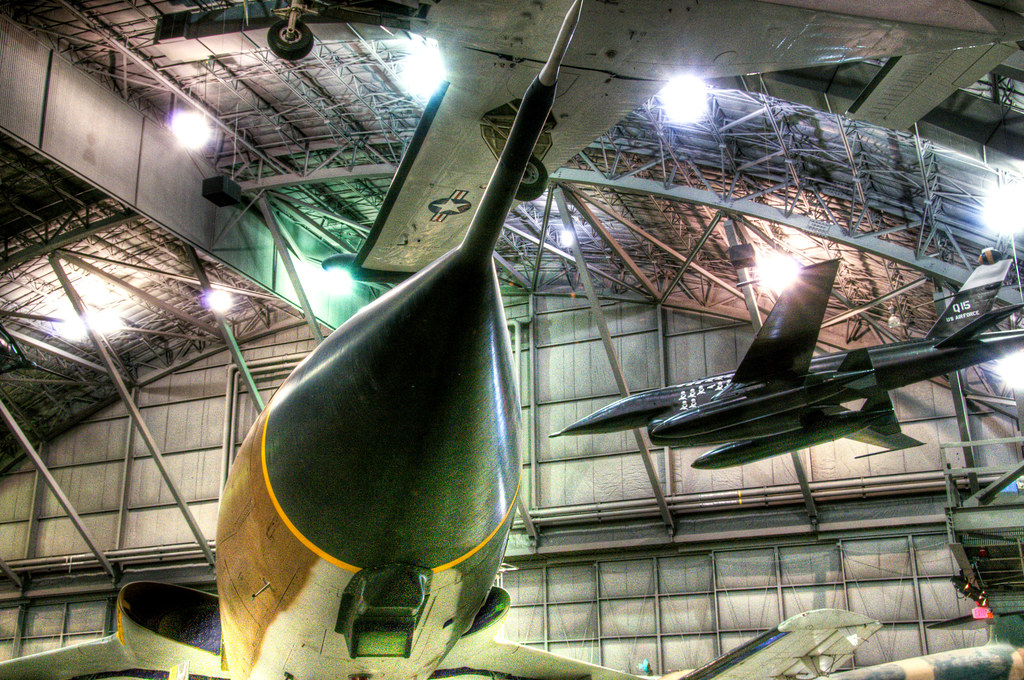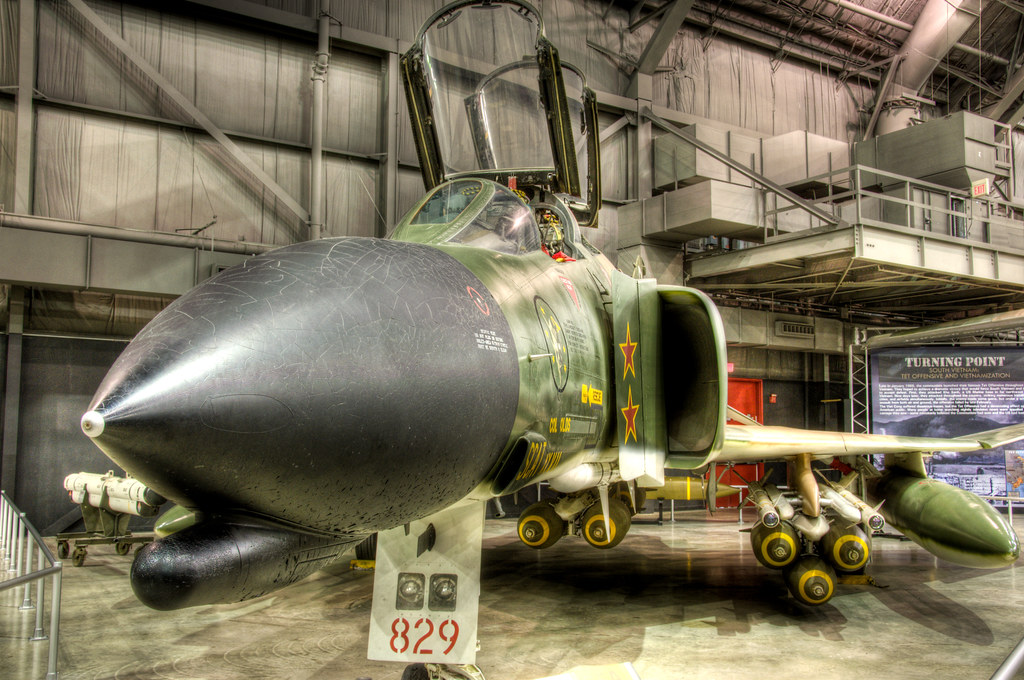
Republic F-105G Thunderchief and Teledyne-Ryan AQM-34Q Combat Dawn Firebee Drone:
The Republic F-105 Thunderchief, was a supersonic fighter-bomber used by the United States Air Force. The Mach 2 capable F-105 bore the brunt of strike bombing over North Vietnam during the early years of the Vietnam War. Originally designed and deployed as a single seat aircraft, a two-seat Wild Weasel version was later developed for use in the specialized Suppression of Enemy Air Defenses (SEAD) role against surface-to-air missile sites. It was commonly known as the Thud by its crews.
Firebee drones flew many types of missions, including photographic reconnaissance, electronic intelligence gathering, and radio communications monitoring. Launched in mid-air from a modified C-130, the AQM-34Q flew a preprogrammed course or was manually flown by a remote operator. It intercepted radio signals from as far as 300 miles away and relayed them in real time to a ground control van. After returning to a safe area over water, the AQM-34Q deployed a parachute. A modified helicopter then hooked the parachute to catch the drone in mid-air -- if the operation, failed the drone was retrieved from the ocean's surface. The museum's AQM-34Q was nicknamed the Flying Submarine because of the many times it dropped into the ocean. Water recoveries are represented by dolphins and airborne retrievals are represented by parachutes.

McDonnell Douglas F-4C Phantom II
The McDonnell Douglas F-4 Phantom II is a tandem two-seat, twin-engined, all-weather, long-range supersonic jet interceptor fighter/fighter-bomber originally developed for the U.S. Navy by McDonnell Aircraft. Proving highly adaptable, it became a major part of the air wings of the United States Navy, Marine Corps, and Air Force. It was used extensively by all three of these services during the Vietnam War, serving as the principal air superiority fighter for both the Navy and Air Force, as well as being important in the ground-attack and reconnaissance roles by the close of U.S. involvement in the war. First entering service in 1960, the Phantom continued to form a major part of U.S. military air power throughout the 1970s and 1980s, being gradually replaced by more modern aircraft such as the F-15 Eagle and F-16 Fighting Falcon in the U.S. Air Force; the F-14 Tomcat and F/A-18 Hornet in the U.S. Navy; and the F/A-18 in the U.S. Marine Corps. It remained in use by the U.S. in the reconnaissance and Wild Weasel roles in the 1991 Gulf War, finally leaving service in 1996.[ The Phantom was also operated by the armed forces of 11 other nations. Israeli Phantoms saw extensive combat in several Arab–Israeli conflicts, while Iran used its large fleet of Phantoms in the Iran–Iraq War. Phantoms remain in front line service with seven countries, and in use as an unmanned target in the U.S. Air Force. Phantom production ran from 1958 to 1981, with a total of 5,195 built, making it the second most-produced Western jet fighter behind the F-86 Sabre.

LTV A-7D Corsair II (LTV stands for Ling-Temco-Vought, a large U.S. conglomerate which existed from 1969 to 2000)
The A-7D is a single-seat, tactical close air support aircraft derived from the U.S. Navy's A-7, where it was a carrier-based subsonic light attack aircraft introduced to replace the United States Navy's A-4 Skyhawk, initially entering service during the Vietnam War. The USAF A-7D flew a total of 12,928 combat sorties during the war with only six losses – the lowest of any U.S. fighter in the theater. The aircraft was second only to B-52 Stratofortress in the amount of ordnance dropped on Hanoi and dropped more bombs per sortie with greater accuracy than any other U.S. attack aircraft, achieved with the aid of an automatic electronic navigation and weapons delivery system.

No comments:
Post a Comment